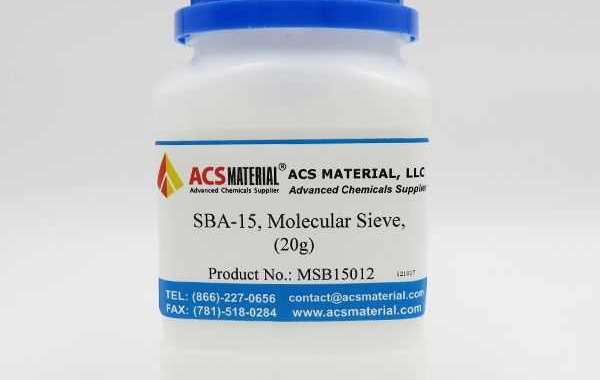Research on mesoporous materials has grown rapidly since their discovery. They have found many practical applications in catalysis and beyond.
The shape of the pore structure is one of the crucial factors that determines the catalyst performance. This is especially true for porous silica KIE-6, whose 3D wormhole structure facilitates mass transfer and thus improves the catalytic activity in formic acid decomposition.
Synthesis
In the mesoporous silica field, good control of morphology and particle size is of major importance. This is mainly because mesoporous silica nanoparticles are used in various applications including catalysis, adsorption, polymer filler, optical devices and drug delivery. Therefore, there is a need to develop synthesis methods that produce well-dispersed mesoporous silica with tunable mesostructures and pore size. There are several synthesis methods which include fast self-assembly, soft and hard templating, modified Stober method, dissolving-reconstruction and aerogel approaches. These synthesis techniques yield well-dispersed MSNs with mesostructures and pore sizes ranging from few nm to hundreds of nm.
MSNs can be functionalized in the mesostructured state through grafting, either before or after the synthesis. Postsynthesis grafting is often used to functionalize accessible silica surfaces, such as those on the surface of the nanoparticles and areas near pore orifices. In this method, the mesoporous silica is exposed to a solution or vapor containing the active molecules, and they diffuse into the empty pores. In some cases, the mesoporous silica can be backfilled with organic molecules to create mesoporous materials that are chemistically modified.
Mesoporous silica is also an excellent carrier for the delivery of drugs and contrast agents. Its large surface area and high pore volume offer excellent drug-loading capacities. In addition, its tunable pore and particle size allow the formation of mesoporous structures with specific drug-loading properties. The physicochemical properties of mesoporous silica vary depending on the type of surfactant used to synthesize the material. For example, the widely used CTAB molecule is known to interact with the phospholipids that make up the cell membrane, and can lead to cell death at high concentrations.
Consequently, it is essential to use safer surfactants for the synthesis of mesoporous silica for biomedical applications. Recently, it has been shown that mesoporous silica particles can be used for the oral administration of drugs with metabolic effects. The authors of this study found that mesoporous silica attenuates adipose tissue accumulation in a diet-induced obese mouse model. However, further in vivo and in vitro studies are required to understand the metabolic effects of mesoporous silica and identify which physicochemical properties, especially pore size, are critical for these effects.
Characteristics
In the last decade, a great interest has been shown in research on mesoporous silica nanoparticles for their biomedical applications. A Mesoporous silica supplier provides an excellent platform for carrying cargo, allowing for a controlled release of therapeutic agents and minimizing side effects.
Depending on the additives used during their synthesis, mesoporous silica can exhibit a wide variety of textural and structural properties that can be tailored to specific application requirements. For example, a mesoporous silica particle’s size can be tuned to the appropriate range for drug delivery, while its surface can be functionalized with different functionality for targeted cargo uptake or bio-sensing.
The pore structure of mesoporous silica particles can also be modified to control the release rate or uptake of target molecules in the biological system. For instance, the mesoporous silica core can be loaded with a target molecule that is then coated with an electrostatic polyelectrolyte layer. The polyelectrolyte acts as a barrier for the drug, protecting it from being released prematurely.
For example, a mesoporous spherical silica particle can be coated with a polyelectrolyte and then encapsulated with the antibiotic rifampin. The encapsulated antibiotic can then be released from the mesoporous silica at a controlled rate over time, allowing for precise dosing and reducing the likelihood of antibiotic resistance.
Another important property of mesoporous silica is its ability to host a large number of ligands or functional groups, making it ideal for carrying therapeutic agents and cellular uptake. For this purpose, mesoporous silica matrices can be functionalized with bio-active molecules such as peptides, enzymes, drugs, and DNA molecules. This can be done by using various chemical methods such as amine, thiolation, or hydrophobization to change the surface of the mesoporous silica. Once the ligands or proteins are attached, the mesoporous silica matrix is then ready for use in biomedical applications such as cell imaging, disease diagnosis, and drug delivery.
Applications
The tunable surface and pore size of mesoporous silica allow it to be used as an excellent catalyst support material. The immobilization of noble metal, bimetallic, composite, and non-metal nanoparticles into mesoporous silica results in catalysis reactions with high conversion and activity. Furthermore, the recyclability of mesoporous silica supports is good due to its excellent hydrothermal or solvothermal stability.
Mesoporous silica can be synthesized by a variety of methods, including sol-gel and hydrothermal processes. The most common synthesis method involves the use of tetraethoxysilane (TEOS) as a silica source, cetyltrimethylammonium bromide (CTAB) as a templating agent, trimethyl benzene (TMB) as a modulator to tune pore diameter, and alcohol as a solvent. The TEOS/CTAB/TMB/alcohol formulation is then subjected to hydrothermal treatment. The result is a densely packed porous structure with a pore diameter that can be tuned by changing the amount of alcohol.
Another way to prepare mesoporous silica is through the Stober process, which is based on the addition of a base catalyst and a pore forming agent. The pore forming agents are more commonly known as surfactants and have a hydrophobic tail (alkyl chain) and a hydrophilic head (charged group, such as a quaternary amine). They coordinate with water to form micelles, which affects the specific surface area of the mesoporous silica as well as its morphology.
For example, mesoporous silica synthesized by the Stober process with 0.3CTAB:45H2O and 0.1CTAB:600H2O yields spherical particles with an average pore diameter of about 1.25 nm. When the pore forming agent is replaced with glycerol, however, the morphology changes from spherical to rod-like, demonstrating that the specific surface area and the pore diameter are both influenced by the surfactant. FTIR spectra of NH2-functionalized KIE-6, SBA-15, and MCM-41 also show that the surface of mesoporous silica can be modified by functionalizing it with various additives, which affects their catalytic properties. For example, the addition of NH2 groups increases the surface basicity of KIE-6 and SBA-15 to improve their catalytic activity for formic acid decomposition. Moreover, the addition of NH2 can also modify the pore structures of SBA-15 and MCM-41 to make them better suited for gas adsorption.
Future
In the current global climate, reducing emissions from chemical industry is critical, and it will require significant innovation in catalysis. It will also need to be designed based on powerful scientific models, including multi-scale modeling. The Catalysis Center for Energy Innovation (CCEI) at the University of Delaware (UD) is currently working to develop these new tools.
In a recent study, CCEI researchers showed that mesoporous silica with aligned tubular mesopores could be used as a catalyst to accelerate chemical reactions that are typically very slow. The new catalysts reduced the reaction times by up to 10 times. This is a major breakthrough and may have implications in the manufacture of chemicals and other industrial products.
The research was supported by a grant from the U.S. Department of Energy, and the work was carried out in collaboration with scientists from Stony Brook University and Brookhaven National Laboratory. CCEI is one of two Energy Frontier Research Centers funded by the DOE.
Scientists at the CCEI are focusing on developing advanced mesoporous silica materials for a variety of applications, including carbon dioxide capture and conversion, biomass conversion, hydrogen production, water treatment and pharmaceutical production. In the future, they hope to combine these catalysts with other materials in complex networks that will be capable of performing multiple simultaneous reactions. This will help reduce the overall energy use in these processes.
Mesoporous silica is a promising material for drug delivery, since its generous surface area and organized pore structure makes it easy to encapsulate biomolecules. This has led to the development of a number of mesoporous silica nanoparticles (MSNPs) for medical and biological applications. For example, oral administration of mesoporous silica particles has been shown to attenuate adipose tissue accumulation in mice with diet-induced obesity.
American Elements offers several types of mesoporous silica and related products for research, process and commercial uses. These include Mil Spec (military grade); ACS, Reagent and Technical Grade; Food, Agricultural and Pharmaceutical Grade; Optical Grade and USP/BP (European Pharmacopoeia/British Pharmacopoeia) grades. Typical and custom packaging is available. For more information, please visit our website to request a quote.














